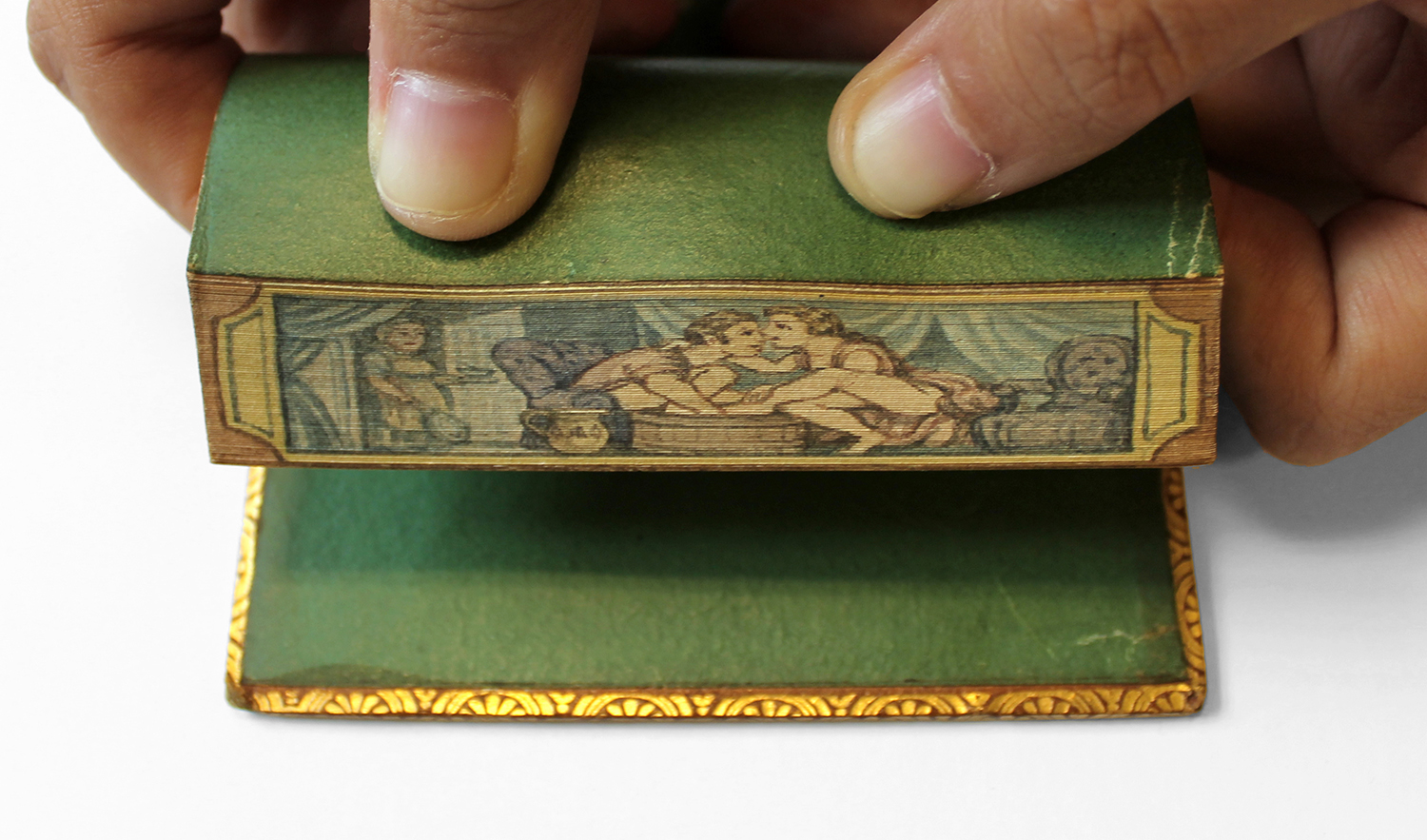
Rasselas
Rasselas: a Tale is a miniature book by Dr. Samuel Johnson published by Jones & Company in 1825. The book has all edge gilt and fore-edge painting. The fore-edge painting depicts an important lady in a well adorned scenery, perhaps a princess or a queen, taking her bath and being assisted by 2 assistants. The fore-edge painting is fanned–the book must be fanned for the picture to be clearly seen. Like many other fore-edge painting books, the name and the date of the illumination is unknown as it was not signed, dated nor referenced anywhere in the book.
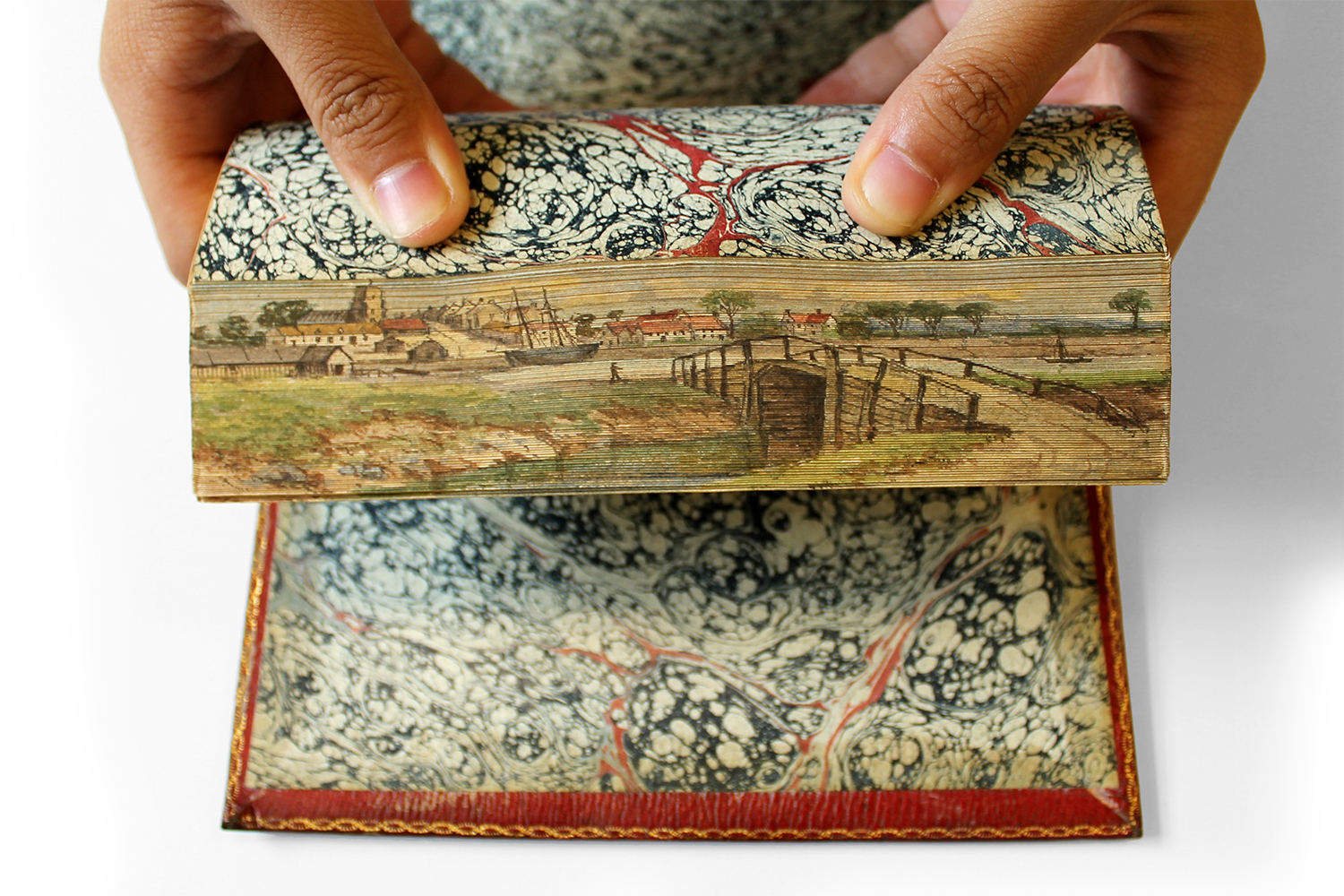
Poem and Plays
Poems and Plays, Volume I by Jane West was published in 1799 by London-based printer Charles Whittingham. This 16 mo is covered in red straight-grain morocco and outlined with a single gilt rule. Inside the front cover the bookseller is indicated as R. Stanes from Essex. Foxing and spotting are extensive throughout the 206-page text. When expanded, the gilted fore-edge reveals a vibrant landscape painting of the coastal village, Blakeney, located in the author’s home country of England.
Jane West (1758-1852) was a London-born novelist, poet, and playwright. She published six volumes of poems, two tragedies, a comedy, and three novels, often under the name of Prudentia Homespun. Her work was known to be conservative and didactic, opposing the revolutionary politics of that era. She was an advocate for expanding women’s educational opportunities. The plays included in her four volumes of Poems and Plays were intended to serve as experimental models for reforming the current modes of theatrical representation.
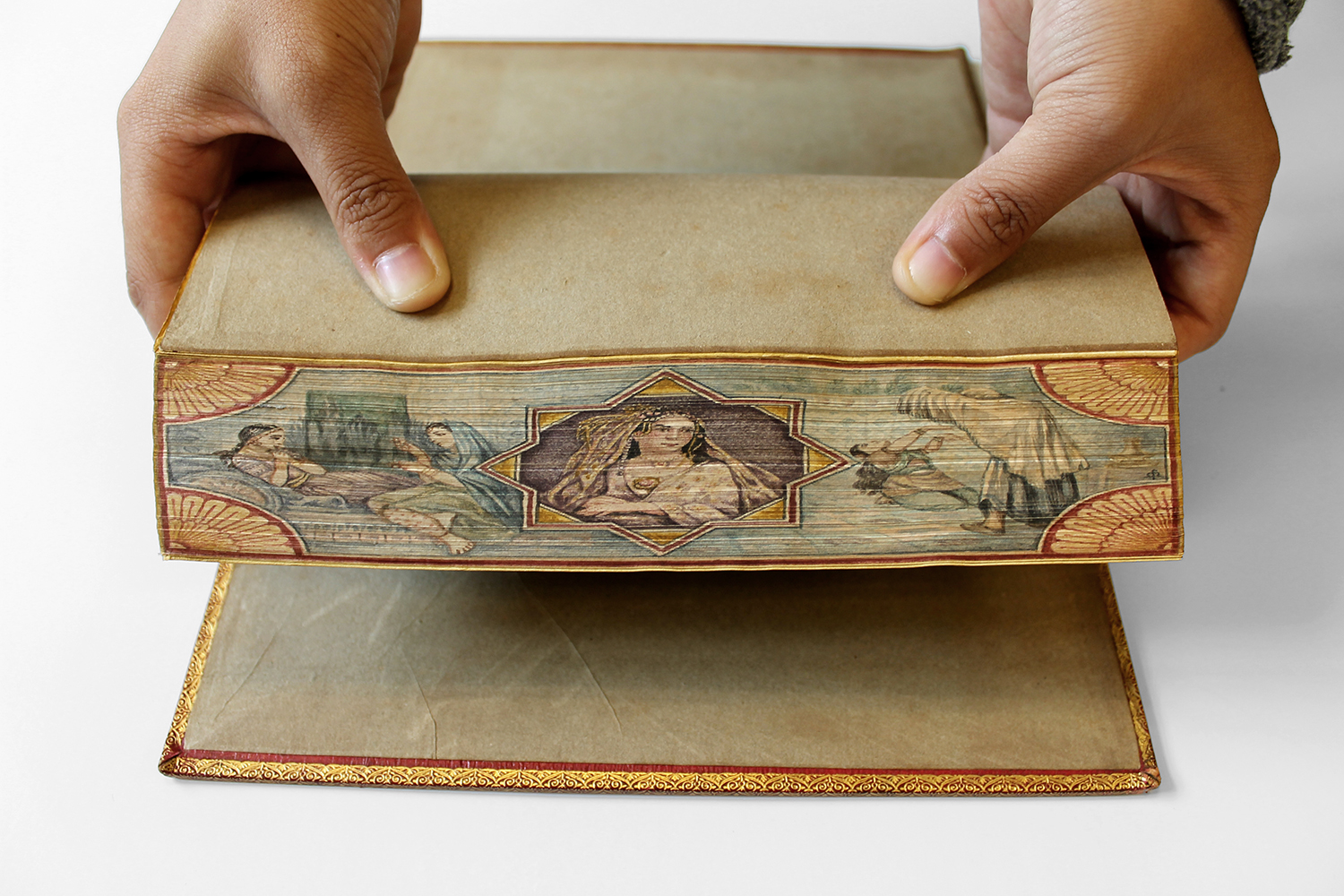
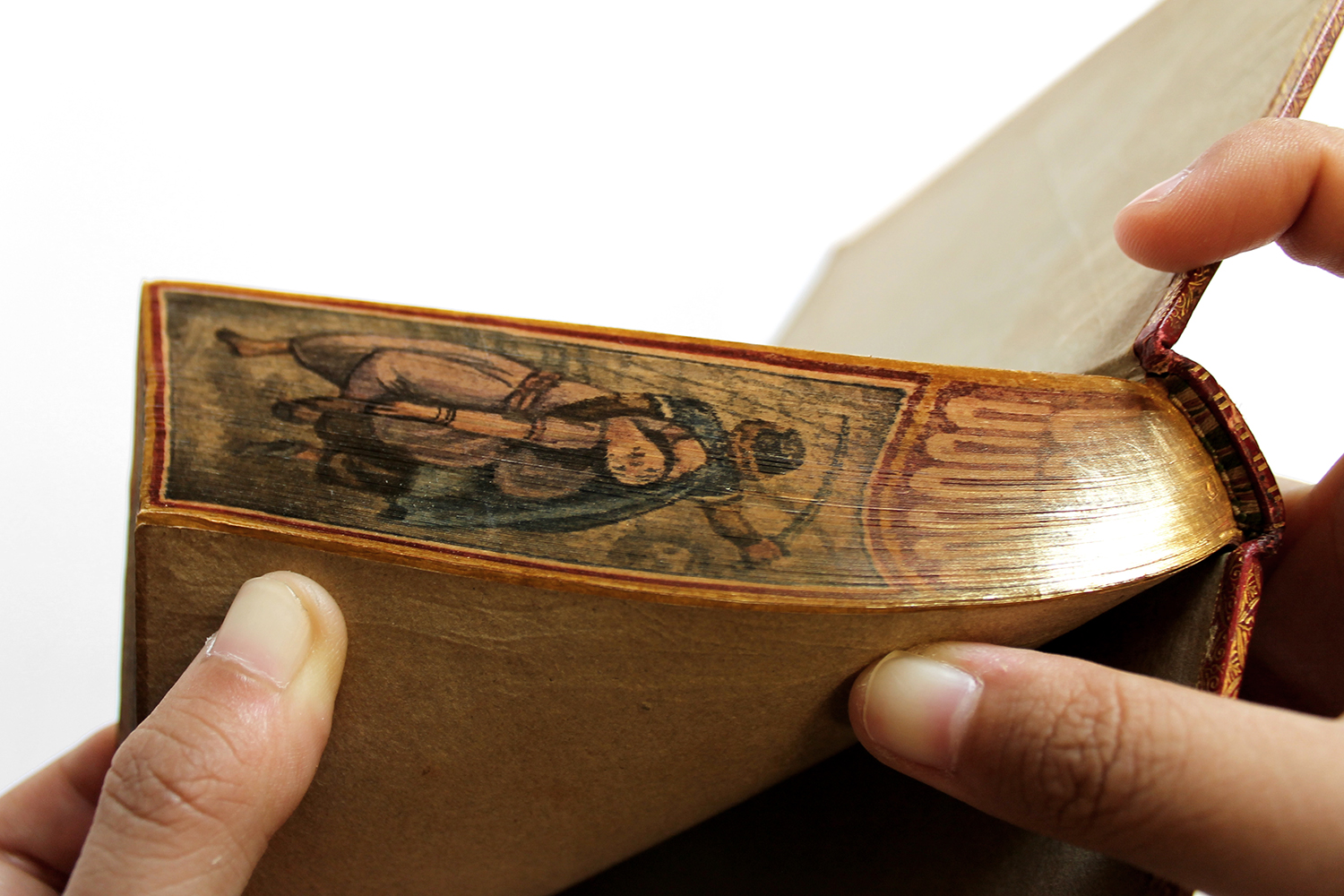
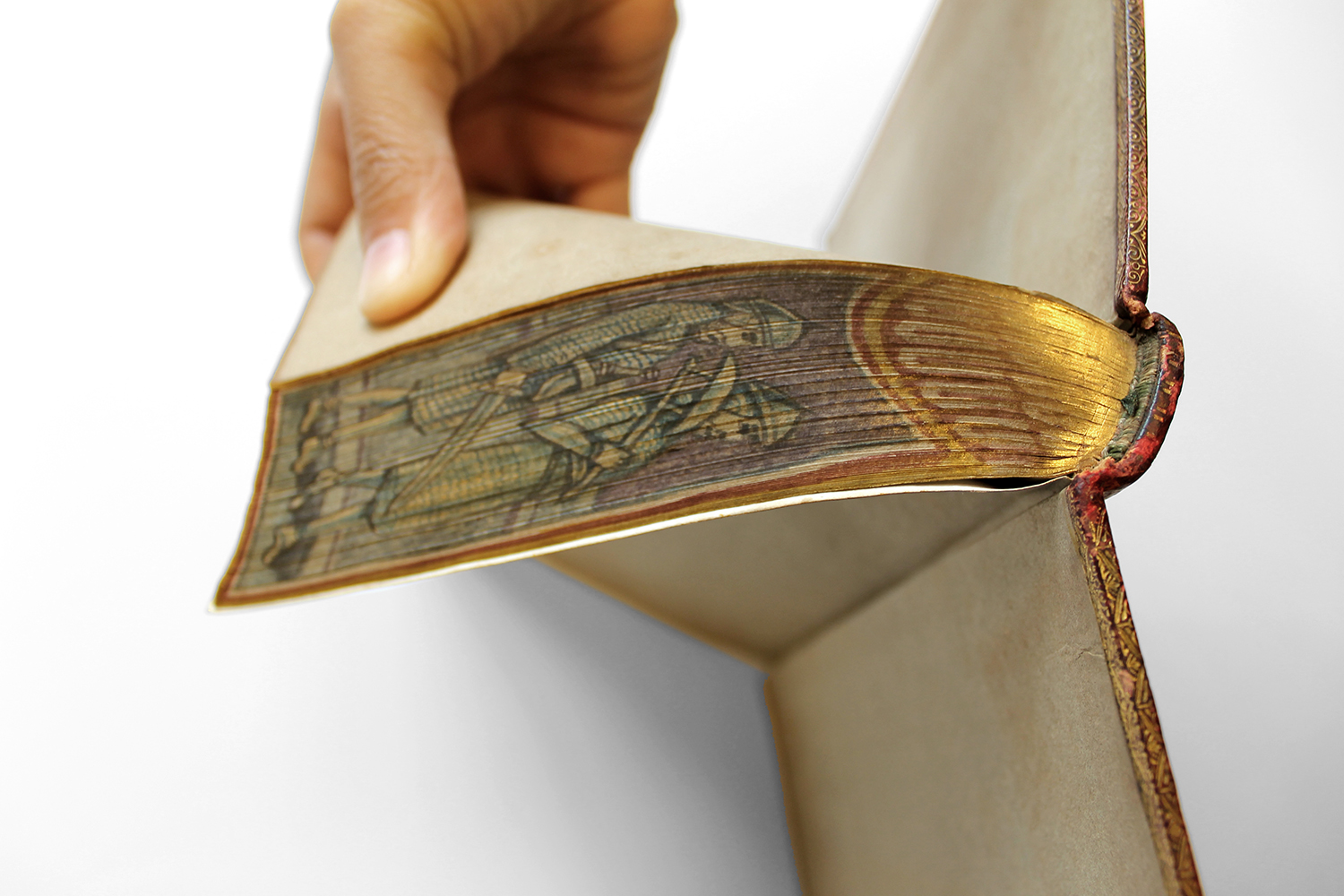
Lalla Rookh
Lala Rookh is an Oriental romance published in 1817 by Thomas Moore. This work consists of four narrative poems connected by a story in prose. It is bound in contemporary straight-grained goatskin and has gilt tooling, along with a matching chemise-style slipcase. On the colophon, it reads “Under the gilded-edge of this book can be found a hidden painting by Martin Frost.” Beneath this message, it was signed, “Martin Frost, MMXI.” The paintings on the head, fore-edge, and tail of the book depict the Princess flanked by scenes from the story.
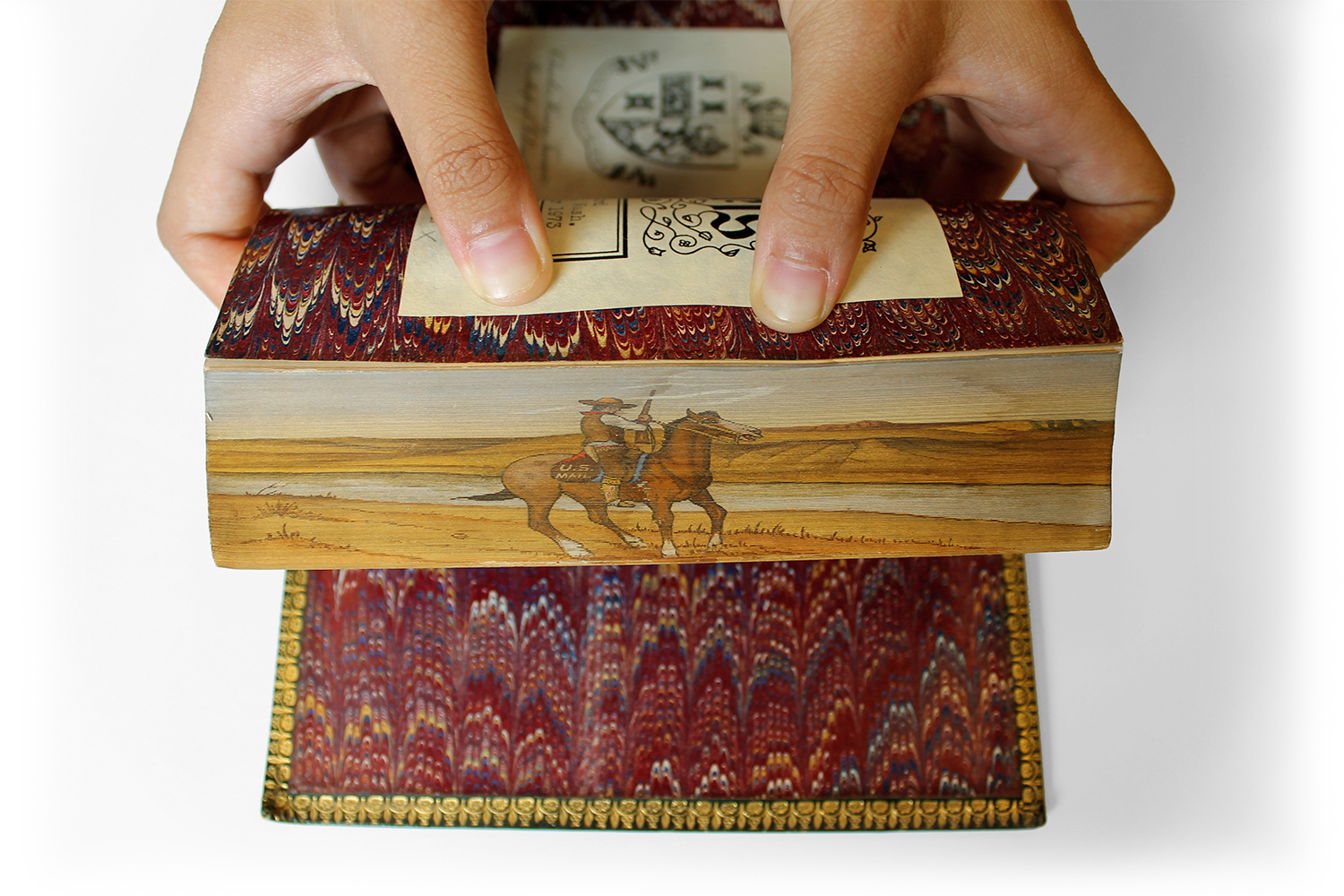
Whims and Oddities
Whims and Oddities is a book by Thomas Hood that contains humorous poems and prose. It is a 16 mo book. The book was published in London by Edward Moxon & Co. in 1863. This was a new edition that combined the two series. Originally, the two series were published in 1826 and 1827. The fore-edge painting depicts a Pony Express rider on the plains. The main colors of the painting are faded yellows and blues.
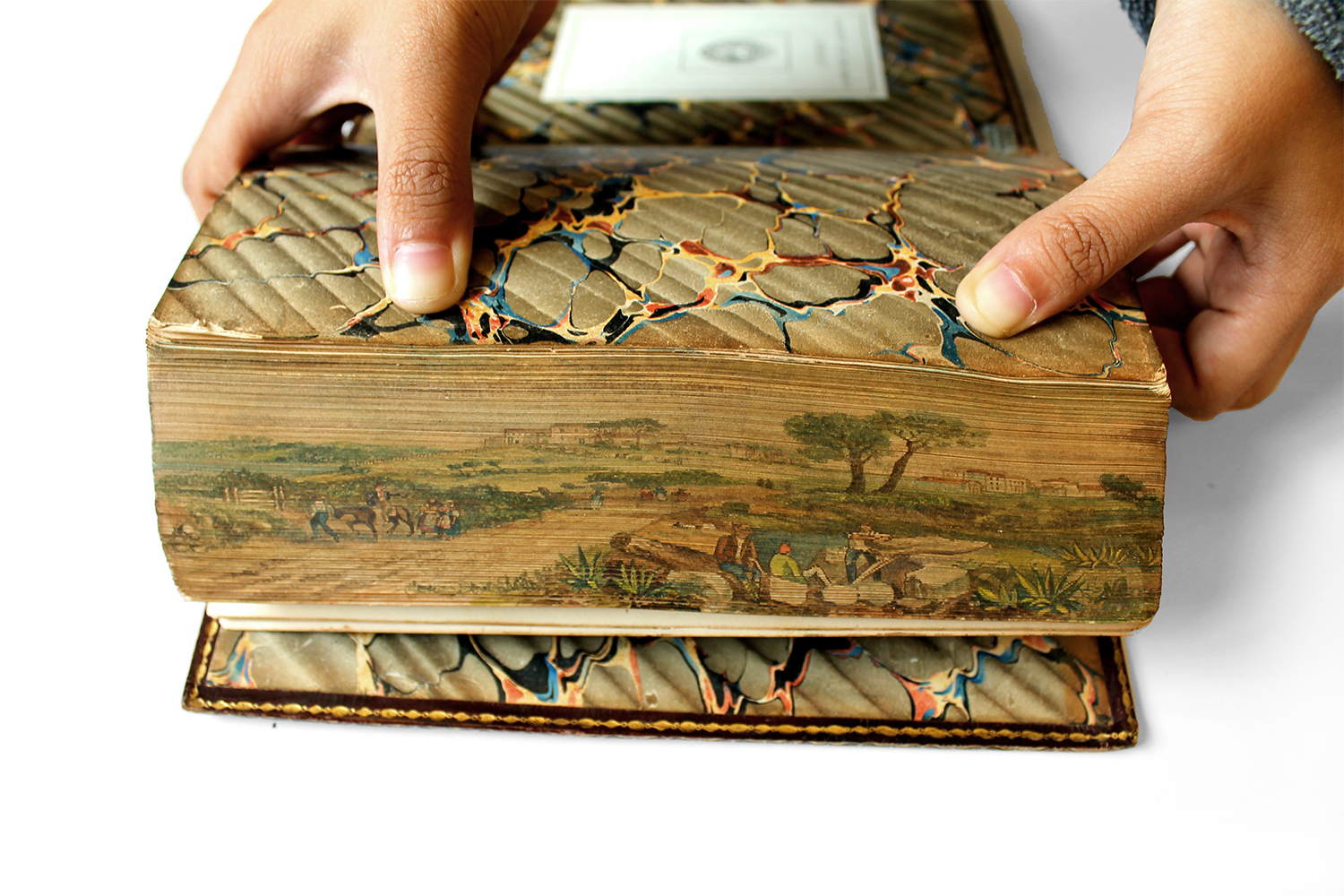
Italy: A Poem
Italy: A Poem was written by Samuel Rogers and was published by Thomas Davison of Whitefriars in London, 1830. It is an 8 vo. covered in morocco. This print is a first edition copy with plates inside made by J.M. Turner. Rogers, an Englishman, traveled through both Switzerland and Italy in 1814. The time Rogers spent in Italy allowed him to greatly appreciate the country, inspiring him to write poems about it. They were not greatly received when first released in two parts in 1822 and 1828. However, after some revisions and the addition of artwork from well-known illustrators, he released the whole work in 1830 and it was much more greatly received. Though a bit faded, the exterior still is quite elaborately detailed with some foxing on the interior. The fore-edge features an Italian scene with some specific spotlights on the lives of Italian people.
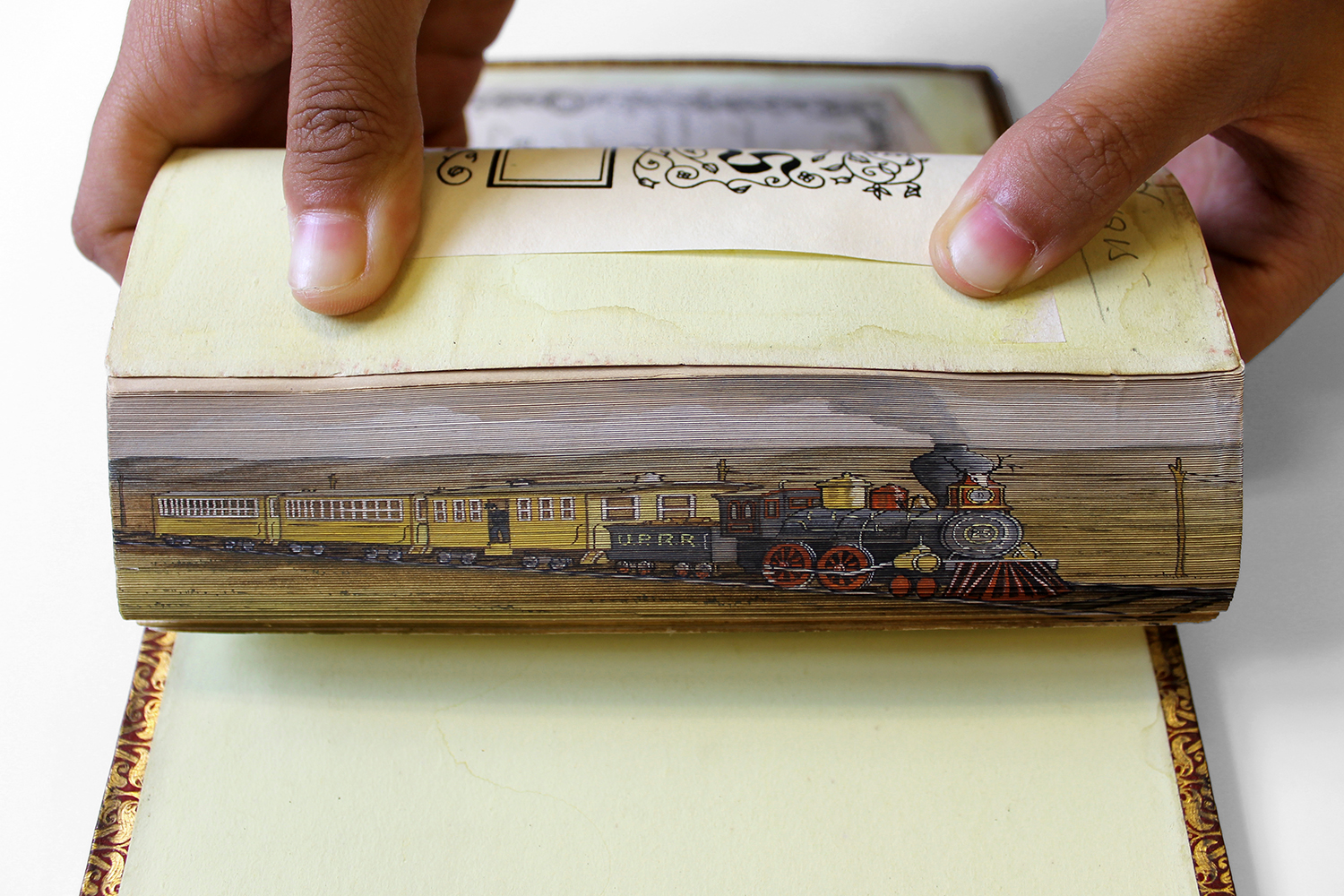
Sesame and Lillies
Sesame and Lillies by John Ruskin is a classic statement about the duties assigned to men and women during the Victorian Era. It unites two of Ruskin’s works: Of Kings’ Treasuries and Of Queens’ Gardens into one book. It was first published in 1865 by Smith, Elder and Co. This copy is a third edition, with all gilt edges and a fore-edge painting of a Western Train with “U.P.R.R.” on it, standing for the Union Pacific RailRoad.
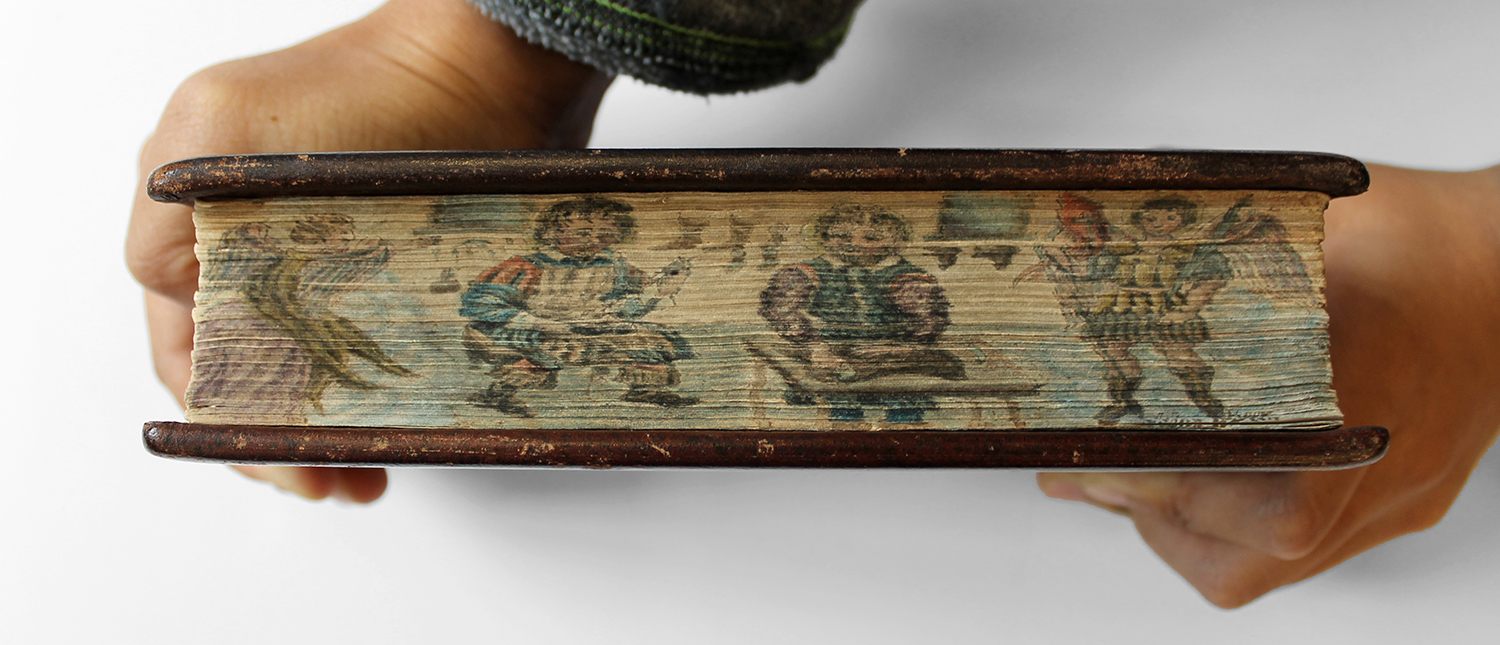
Book of English Trades
The Book of English Trades and Library of the Useful Arts is a book that documents the different trades someone can take up in London. This copy, which is the eleventh edition, was published in 1823 in London for Sir Richard Phillips, a schoolteacher, author, and publisher. Sir Richard Phillips was known for the works he published, both under his name and his numerous pseudonyms. The book appears to have been highly popular and mass produced at the time, as indicated by the cheap paper on the inside, but this particular copy was given a very nice binding later in its life. The fore-edge painting was done by John Beer. On the far left and far right are two angels, and there are two men in the middle. The angel on the left appears to be talking to the man on the left, and the angel on the right appears to be wearing some kind of armor. The man on the right is at a desk with something that looks like a log and a knife.
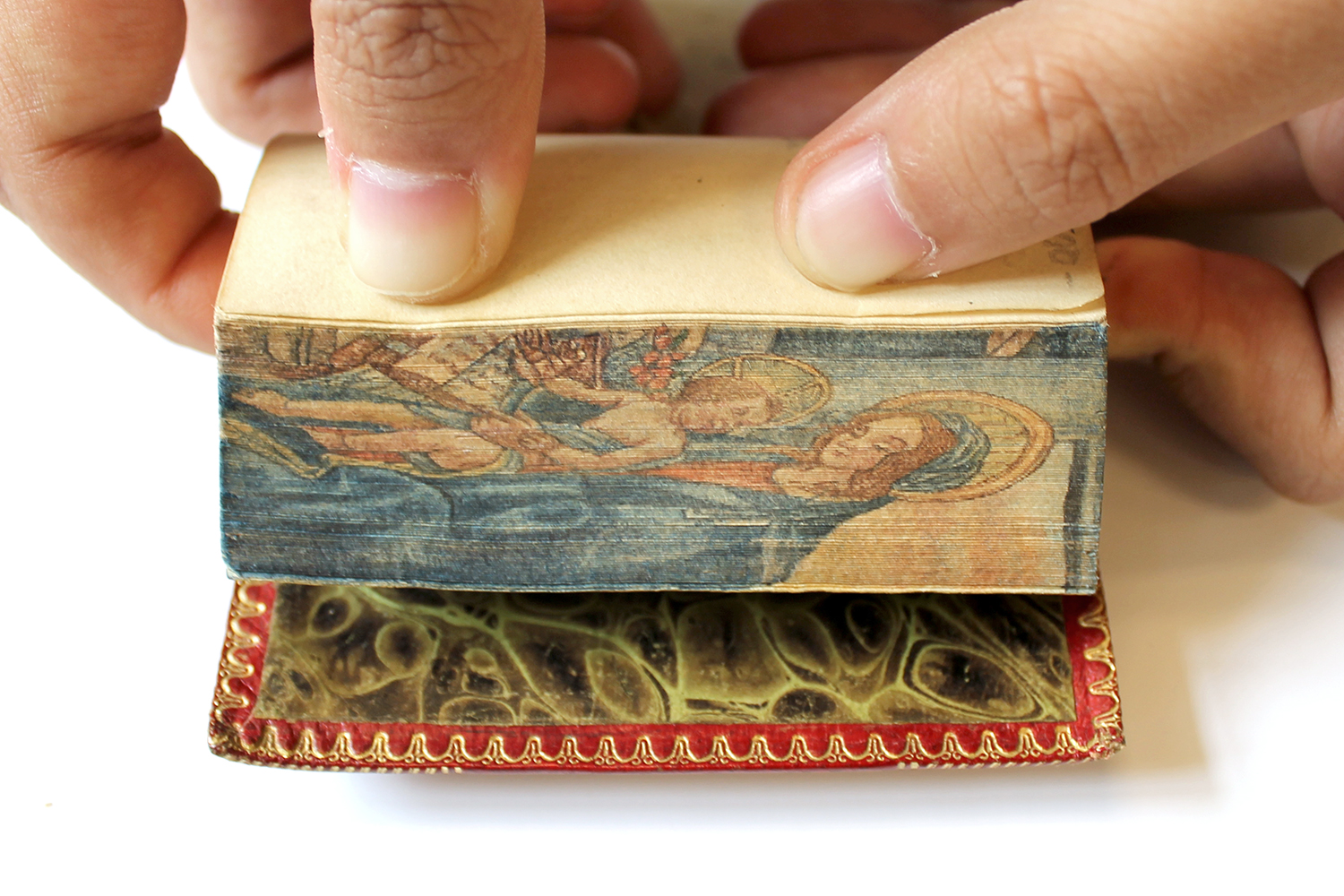
Nouvelles Heures Mignones
Nouvelles Heures Mignones: a l’usage de la Jeunesse ; Contenant l’Office des Dimanche et Fêtes de l’Année ; Selon le Breviaire de Paris et de Rome is a French book of hours published by Le Fuel Libre in 1813. This 64 mo miniature of contemporary red morocco gilt has elaborate gold stamping on the covers and spine. The fore-edge of the 207-page text block features a portrait-oriented painting of the Virgin Mary and Jesus in very good condition.
Books of Hours were very popular during the late Middle Ages and the Renaissance, from c. 1250 to c. 1550. The main content is the Office of the Virgin Mary which lists prayers to be recited at home eight different times of the day, similar to the practice of monks. A calendar is found before the Book of Hours, listing important feast days and activities throughout the year. Texts are often specific to a certain region. In this case, the book is intended to be used by Catholics in Paris and Rome. Books of Hours can vary from modest everyday versions to deluxe versions on fine parchment with rich illuminations. They often contain records of family milestones and are passed down from generation to generation as heirlooms.
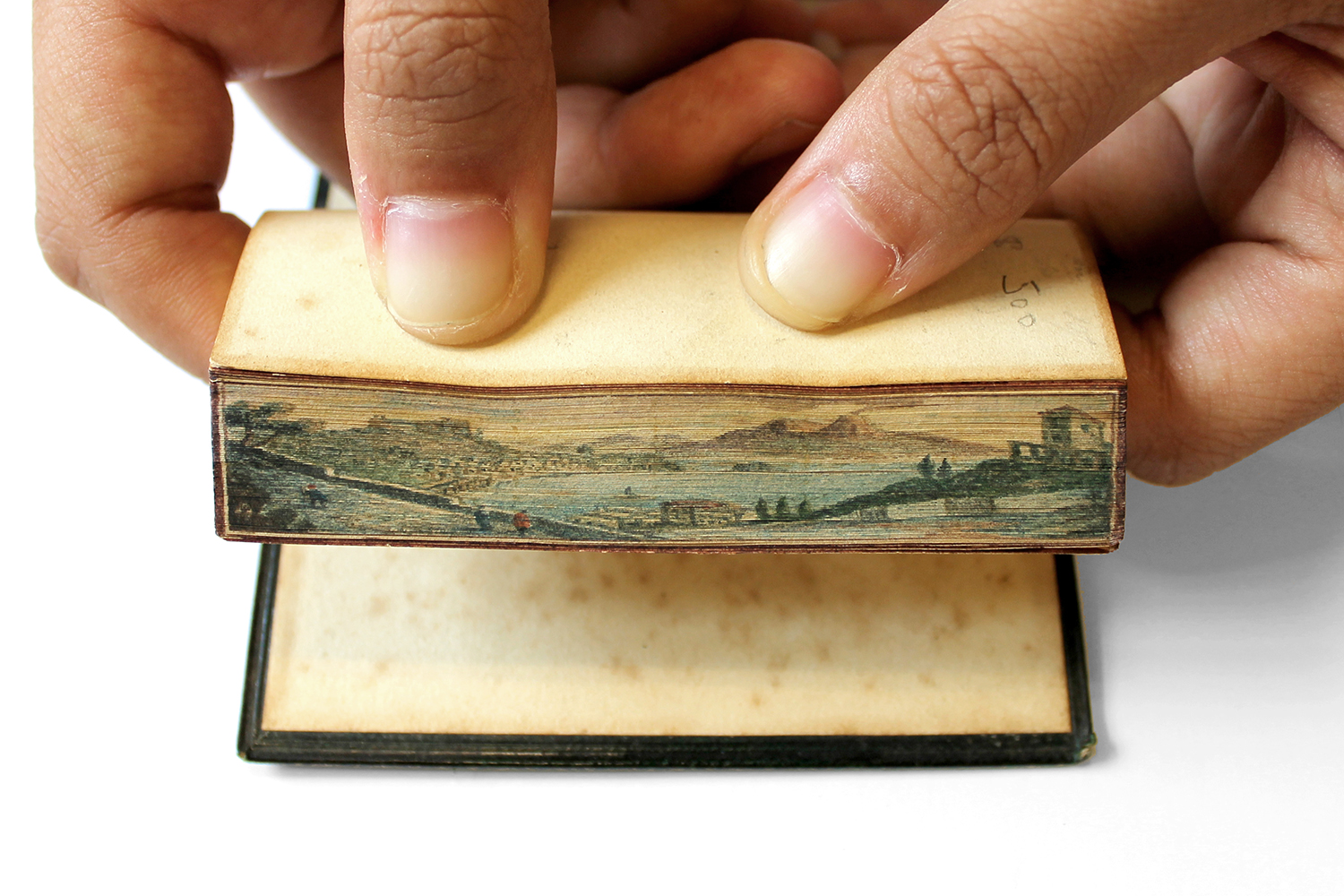
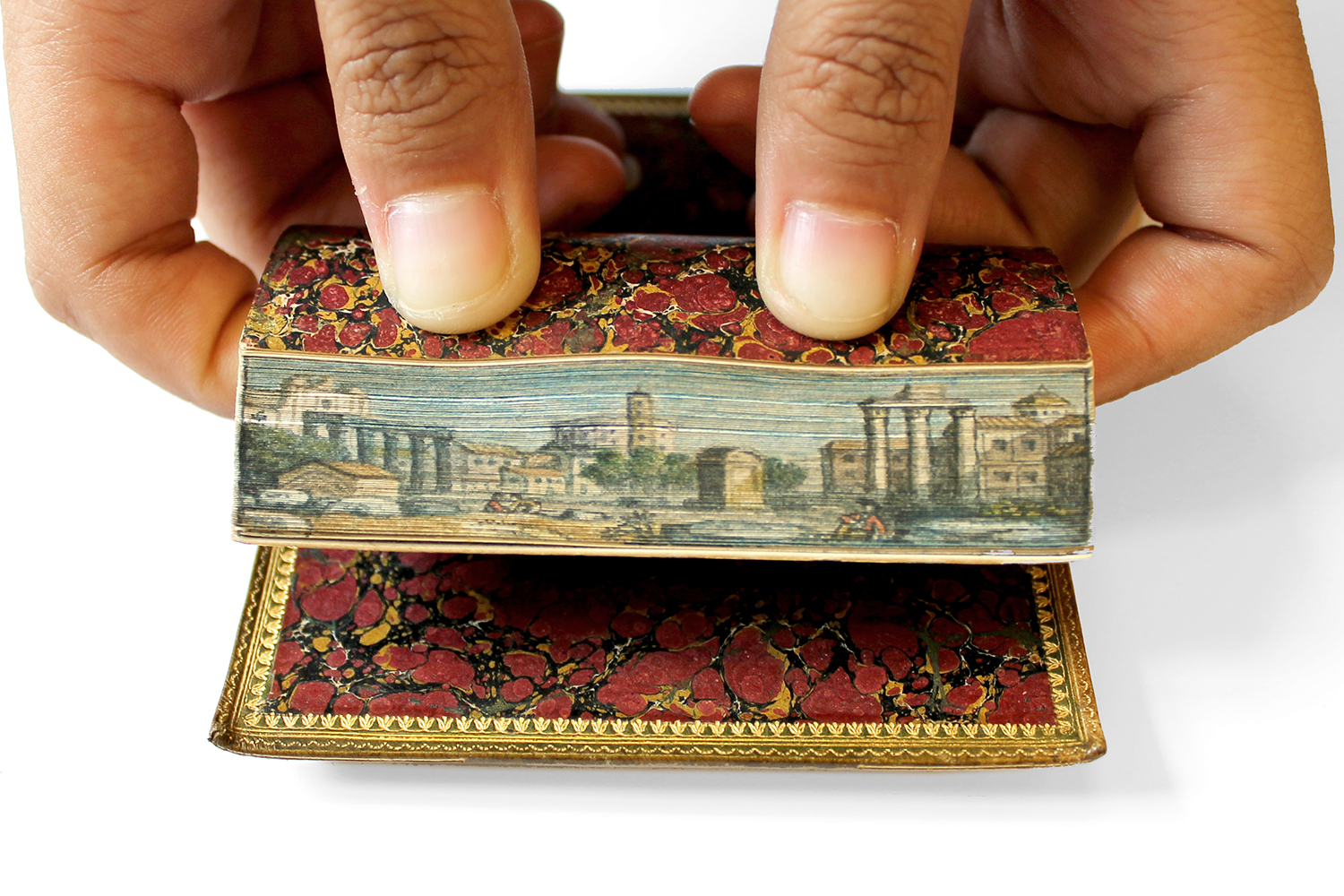
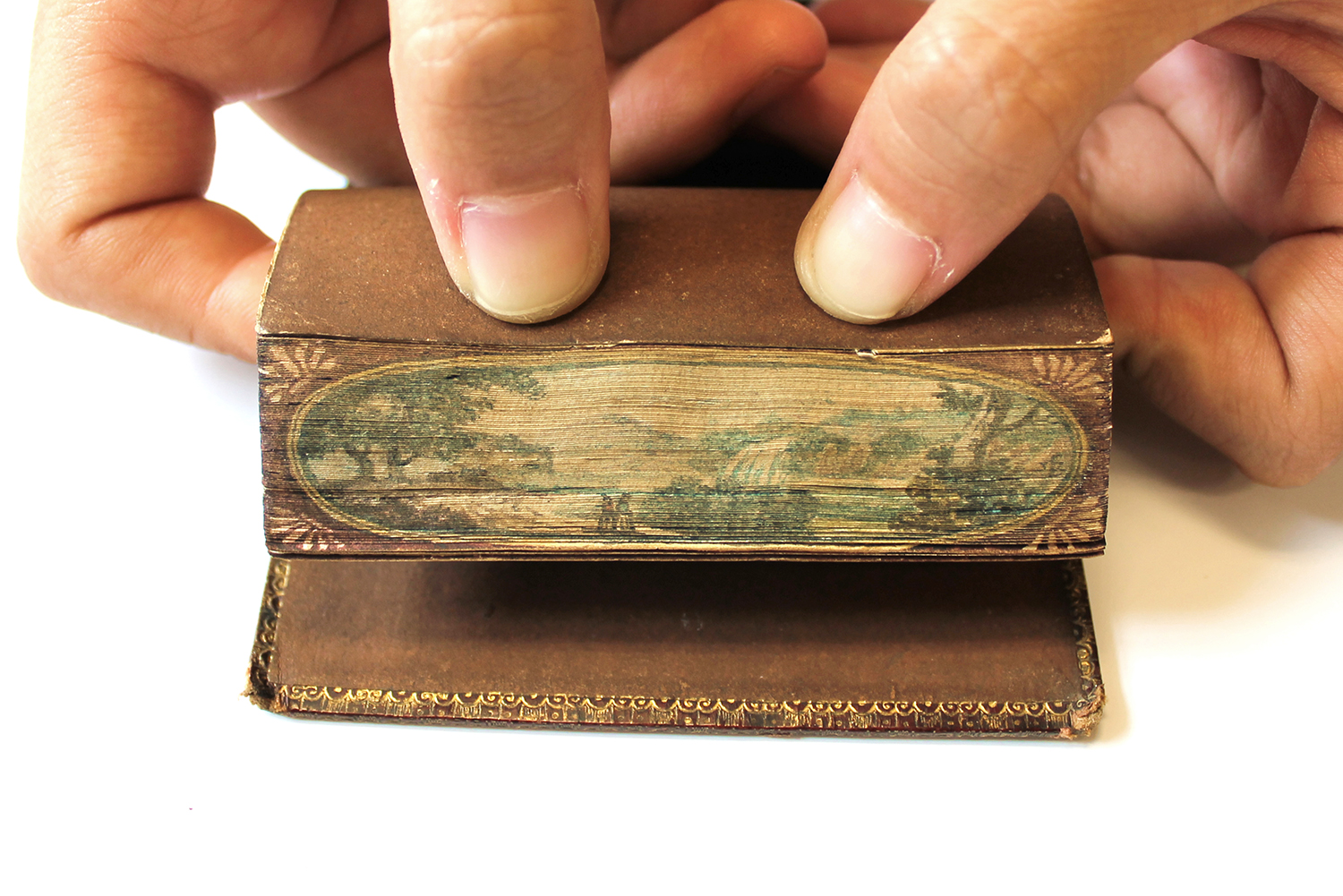
Quintus Horatius Flaccus
These three miniature books contain the works of Quintus Horatius Flaccus, a poet better known as Horace, who lived contemporary and adjacent to Caesar Augustus. His works of poetry are still studied today. These books are a compilation of the works of Horace, among the contents are his satires, as well as his Ars Poetica. Two copies are excudebat C. Corrall, 1826, and published by William Pickering, each featuring a fore-edge painting: one with a Roman city and the other depicting a lake near a volcano. The former is contained in a custom dark green binding stamped with the gilt lettering, “J. L. R.,” while the latter has a yellow-brown binding blind-stamped with elegant designs. The remaining copy was also published by William Pickering, in 1820, and has a dark red-brown binding with a blind-stamped floral design. Its fore-edge painting features a waterfall framed between trees.
